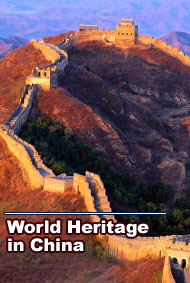
|
|
|
Regong Art
Tongren: Birthplace of Regong art Lying along the Yellow River to the southeast of Qinghai Province, Tongren County is reputed as the "Home of Tibetan Culture and Art". Tongren is called "Regong," Tibetan for "Golden Valley." It is where the art form sprang up along with the rise of Lamaism and the construction of lamaseries, mainly reflecting Tibetan Buddhist culture. By the mid-17th century, Regong had become a village where nearly everyone could paint, and every family was engaged in the art. The people of Regong handed down the art from generation to generation, and now almost everyone there is an artisan. Tongren County contains five villages, and Wutun Village is the most famous for its Regong art. In Wutun alone, there are more than 100 Tibetan families of artists. Drawing on the Dunhuang arts, Tibetan painting, garze (in Sichuan) woodcarving and Tibetan folk art, the families have formed their own particular styles. Main Features In the early period, Regong artworks were crude and unsophisticated with monotone colors, featuring typical Indian and Nepalese styles. In the mid-17th century, artisans mastered better techniques and the painting styles became more elegant and exquisite. They also paid more attention to decorative effects in their works. Thus, the art entered a prosperous period of development. After the 19th century, Regong artworks featured beautiful colors and an exquisite touch. The artisans of this period paid special attention to the decorative interest in their works and employed a great amount of gold to make the works resplendent and magnificent, creating an ardent atmosphere. The works not only look harmonious in their arrangement of different subjects but are also lifelike and lively, displaying outstanding artistic effects. Over the past several centuries, Regong art artisans traveled to many different regions to create different works, such as Qinghai Province, Tibet Autonomous Region, Gansu Province,Sichuan Province, the Inner Mongolian Autonomous Region and other places in China, as well as India, Nepal, Thailand, Mongolia and other countries in the world, leaving behind numerous exquisite art works. They assimilated artistic nourishment from Tibetan paintings,Dunhuang muralsand foreign similar works and then combined them with local folk arts of Qinghai Province to gradually consummate the techniques of Regong art. The unpretentious painting style, even and harmonious color arrangements and realism of Regong artworks fully reflect Tibetan culture, making the art a curiosity hard to come by in China's cultural heritage. Major Types 1. Thangka Thangka are visual expressions of the philosophy and psychology of Buddhism, painted on cotton or linen canvases that may be rolled up when not on display. They often depict scriptures and scenes from the lives of saints and great masters. Wutun Village in Tongren County is regarded as home of the thangka. A thangka can take anywhere from a few months to several years to finish. Creating, for example, numerous miniature images of Bodhisattva on a one-square meter thangka canvas requires perfect understanding of iconometric principles, not to mention painstaking brushwork. It is a discipline that takes at least a decade to master. Thangka painting is executed in four main stages. The canvas surface is first coated on both sides with a thin layer of plaster of Paris. This ensures smooth application of colors and inhibits peeling. The subject matter is then sketched on the canvas in charcoal. The third step is application of color from pigments of turquoise or carol according to the color gradations. Finally, the main features of the thangka, such as images of Buddha and Bodhisattva, demarcated subdivisions of a certain form, or swirling masses of flames, are outlined in gold foil for greater effect. |